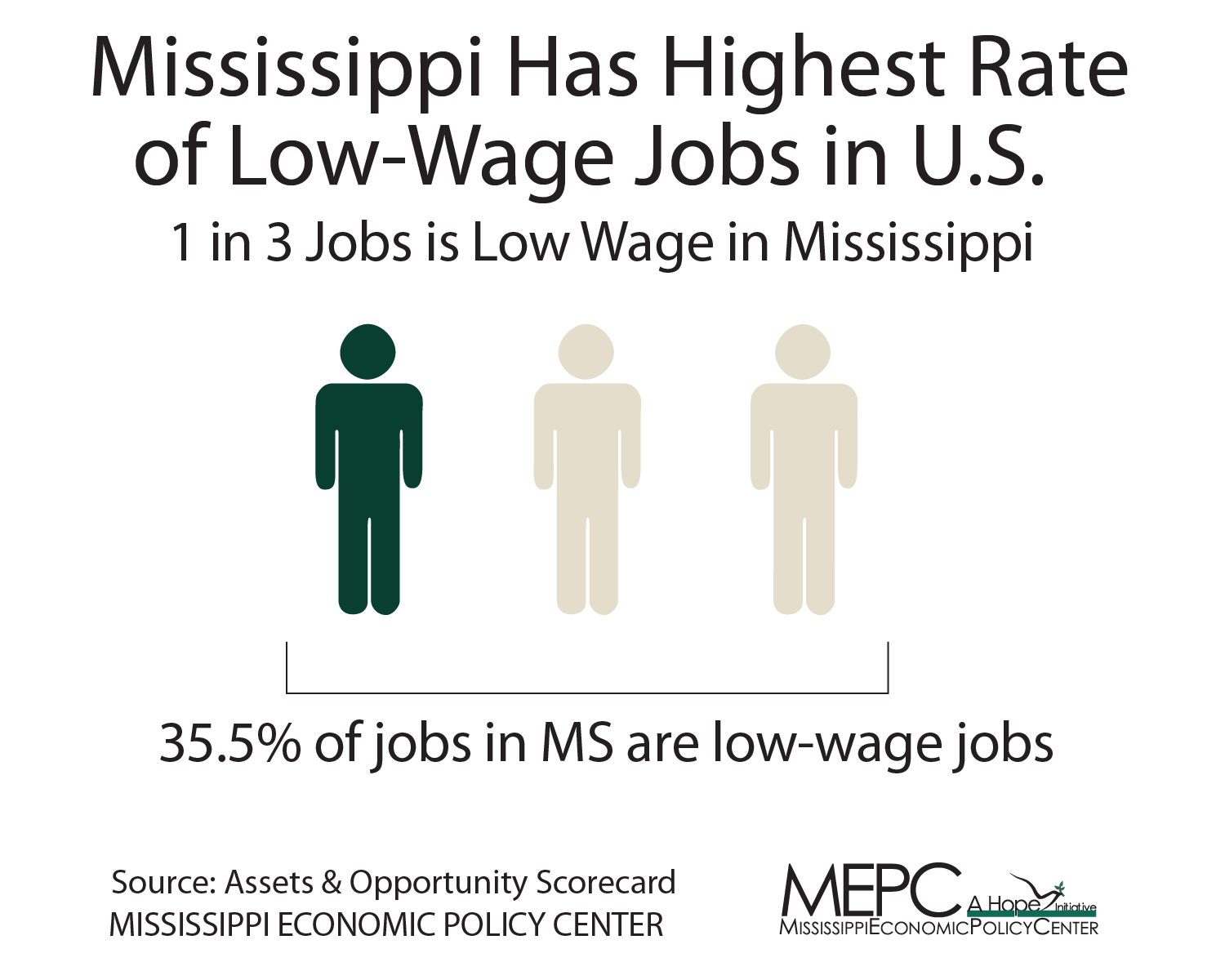At present, job growth is outpacing income growth in Mississippi. Currently, new jobs available in the state are in occupations with low wages, like part-time or temporary jobs, which tend to lack other important benefits like health insurance, paid sick leave, and paid vacation. While job growth is a positive for the state, it is not in high-wage areas – areas that ultimately provide families with long-term financial security.
Low-Wage Jobs
Mississippi has the highest rate of low-wage jobs in the nation. Low-wage jobs refer to the percentage of jobs in occupations with median annual pay below the 100% poverty threshold for a family of four ($22,314).
One-third of all jobs in the state are low-wage jobs (See Infographic). Rather, 35.5% of jobs are in occupations that provide poverty-level wages. This is 14.5 percentage points higher than the national average.
Stagnant Wages
Mississippi’s workforce has experienced relatively minimal changes in real wages since 2000. This makes it increasingly more difficult for low-income working families to lift themselves out of poverty and save and build assets for future investments, like post-secondary education or home ownership.
In 2000, median wages in the state were slightly above $14 (See Chart). Real wages peaked at $15.18 in 2004, but the state’s workforce has not seen an improvement in its wages since then, even though indicators point to an improved economy.
Both the nation and the South have also experienced dismal wage growth. From 2000 to 2013, national wages increased by an average of 0.1% annually, while wages in the South grew by an average on 0.2% annually. Additionally, Mississippi’s median wages are below the national and regional averages. Last year, Mississippi’s median wage was $2.27 below the national median wage and $1.38 below the South’s median wage.
Mississippians are among the most financially vulnerable in the nation. The prevalence of low-wage jobs coupled with weak wage growth in the state has made it increasingly more difficult for low-income Mississippians to climb the economic ladder. It is important to look beyond the basic job numbers to evaluate job quality and whether the jobs created allow for long-term financial security. Next week, MEPC will explore the impact of tax cuts on jobs in Mississippi.
Sources:
Corporation for Enterprise Development. (2014). Assets and Opportunity Scorecard, 2014. Retrieved from http://assetsandopportunity.org/scorecard/
Working Poor Families Project. Economic Policy Institute analysis of data from the 2013 Current Population Survey.









